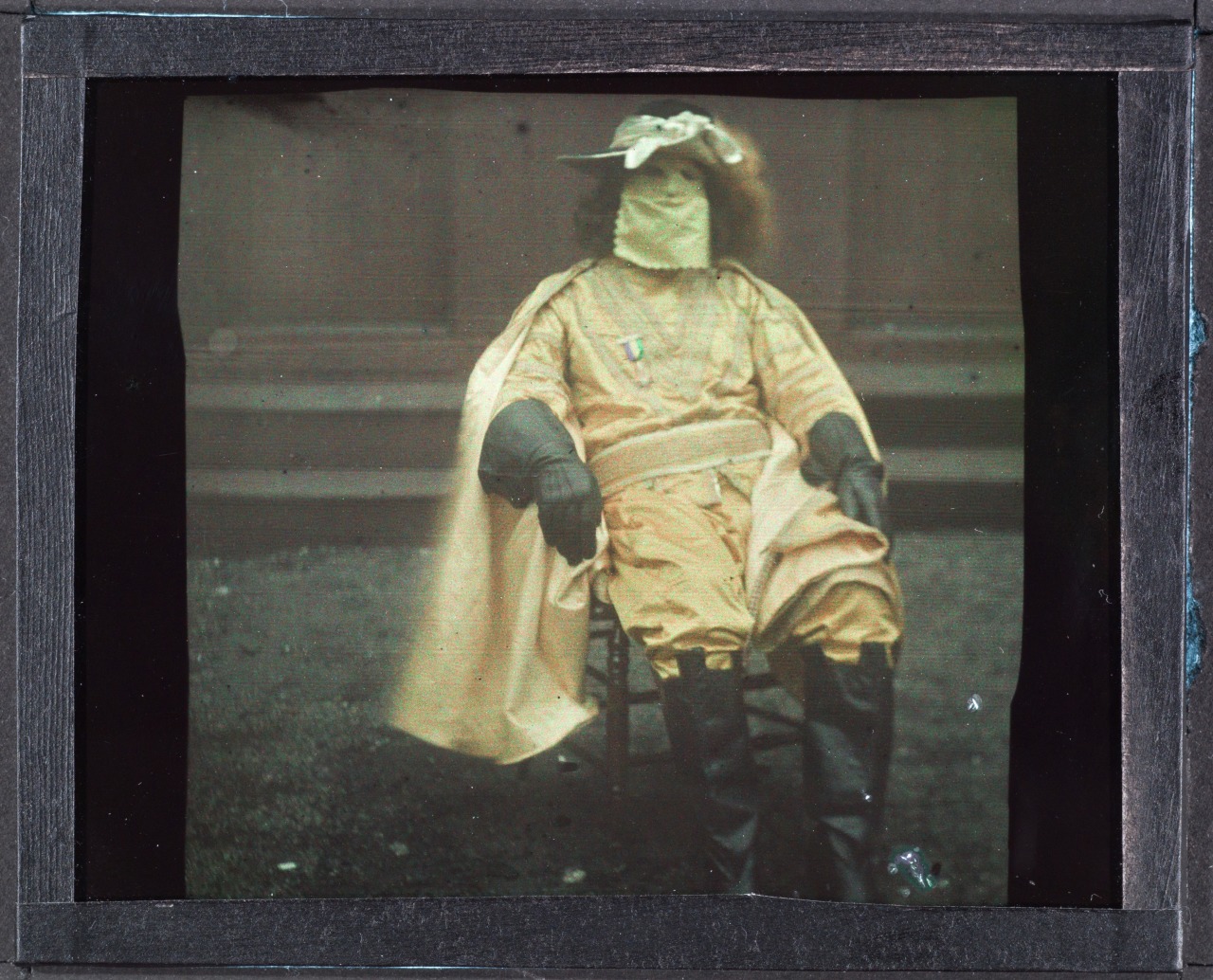The autochrome process was the first viable color process for photographers. The quest for color photography had begun during the age of the daguerreotype, in the 1840s and ’50s, when at least four different methods for the application of color to black-and-white images were in use. The autochrome process—named for the plates that facilitate colorization—was the first widely successful option.
An autochrome is the result of an additive color process and is a unique photograph—a positive transparency on a glass support—with colors composed of minute grains of potato starch dyed orange, green, and blue-violet.
The autochrome process was discovered in France by the Lumière brothers, Louis (1864–1948) and Auguste (1862–1954), who patented their process on December 17, 1903, and presented it to the Académie des Sciences on May 30, 1904. The first autochrome plates were manufactured and marketed in 1907, and the plates remained in production until 1935.
The process creates a positive transparency of an image on glass. To begin, the glass plate is varnished and, while still sticky, is covered or dusted with equal portions of the three colored starches, which are then rolled flat, to make them more transparent and reduce empty space between them. A second dusting with black carbon particles fills in any gaps among the grains of starch, and then the entire plate is subjected to enormous pressure from a rolling machine. The plate receives a second coat of varnish, which, when dry, is made light sensitive with a coating of silver gelatin bromide emulsion.
To make an exposure, the plate is placed in a camera and positioned so that light passes first through the starch—which acts as a body of tiny colored filters—before reaching the emulsion. The plate is then developed using reversal chemistry, which converts the captured image from negative to positive.
Although easily accomplished by amateurs and professionals alike, the process involves several steps: developing, washing, bleaching, and fixing. After a final wash to remove all residual silver and chemicals, the one-of-a-kind final image is protected by a second piece of glass, taped on top of the emulsion.

Ernest Doty Ivy, lieutenant in Rex
Autochrome; ca. 1921
by an unknown photographer
The Historic New Orleans Collection, gift of Mrs. George Stahler Jr., 1980.45
